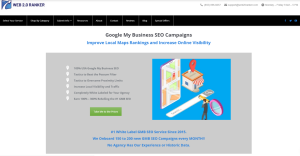Learn to use readily available data to forecast and display key financial information
Readers of this blog have seen several posts focused on the importance of regularly forecasting things such as a company’s Balance Sheet, a Statement of Cash Flows, key financial ratios, loan covenants compliance probability and more.
Why is this important?
As any finance manager or professional knows, much of the financial future of a company is dependent on the correct interpretation of key data and decisions made based on that data. Unfortunately, that data isn’t always readily available from actual accounting systems and from traditional budgeting and forecasting solutions. We’ve also seen in these blog articles that preparing a traditional budget and periodic re-forecasts usually involves only the income and expense accounts, producing a forecasted Income Statement for each period in the budget (e.g., month).
A forecasted income statement represents the results of a strategic plan used in the preparation of an operations plan. Both are then used in building a corporate budget with forecasted revenues and the expenses projected to generate these revenues. Usually, the more ambitious forecasts will show more aggressive growth with usually greater forecasted earnings, which may look promising but can actually signal trouble ahead.
This type of budget, while necessary in any business, fails to deliver the most important set of data, the forecasted financial position of the organization (as represented by a forecasted balance sheet) for any version of the budgeted P&L. As we’ve seen in this series of blog entries, the financial position of any organization is an indication of its financial health. Predict the future financial health of your company and you’re much more likely to make better, more accurate and more timely decisions. Fail to do that and you are likely to deal with severe consequences of poor planning and deficiencies in executing a plan based only on revenue and expense goals.
The conclusion of all this is that a forecast consisting only of revenue and expenses is not only incomplete but may in many circumstances be unrealistic, and in all cases cannot predict the likelihood of a company’s future financial health either improving or deteriorating. The reason for this is that a budget consisting only of revenue lines and expenses, prepared on an accrual basis, will not tell you whether or not you can actually achieve the goals listed in your plan and entered into your budget. This presents several important questions:
1) Will you have sufficient cash to accomplish what your budgeted P&L suggests?
2) Will the timing of your cash flows (e.g., A/R collections, A/P payments, payroll disbursements) allow you to maintain the desired cash balance in each period?
3) Will you be able to acquire the assets needed in order to produce the inventory or service lines projected to achieve the desired revenue?
4) Will your financial ratios be satisfactory throughout the budget period?
5) Will you be able to comply with your loan covenants requirements?
6) In summary: Will your financial health improve or worsen during the budget period and by how much?
The clear answer to these questions is: Without a forecasted Balance Sheet there is no way of reasonably answering any of these questions. You may be holding in your hands an approved corporate budget book that cannot be executed on, even if you had the ability to book the projected sales and find ways to adhere to your budgeted expenses.
What’s worse, you can’t run multiple versions of your budget and see how your financial position changes in future periods in response to these different budget versions, so you can adjust your plan and budget and make other changes that will allow you to meet the plan and budget objectives.
As you may have already found out, it is very hard and risky to base your operations on an incomplete budget, one that makes it easy to miss the budget numbers altogether.
In past blog posts, we saw why most organizations do not forecast their balance sheets: Why you Must Forecast your Balance Sheet (Part 1 and Part 2) and Forecasting a Balance Sheet in a Spreadsheet World. This is just too hard to do using traditional tools such as spreadsheets. It is also becoming apparent that most dedicated planning and budgeting solutions were never designed to deliver a true budgeted balance sheet due to their architecture and relying on spreadsheet-like use, with formulas, functions, links and other user supplied programming, and no “accounting-like” transactions that maintain ending balances in all forecasted GL accounts. You simply can’t add up columns of numbers and arrive at the balance sheet account balances like you do with an income statement.
Those who regularly visit this blog know that I like working with Budget Maestro with Analytics – published by Centage Corporation – mainly because of its unique architecture that enables users to obtain a forecast of their company’s future financial position (i.e., the Balance Sheet), closely representing the organization’s future financial health, and often well in advance of potential adverse changes to the financial position. I think this is a new and positive trend in the development of CPM and Budgeting / Analytics software which to me it seems like a wave of the future.
I don’t know of any other software publisher that implemented Centage Corporation’s philosophy and vision, but I sure hope other developers adopt these principals and offer competing solutions that will allow their users to use the vast amounts of data available from their ERP software, combined with smart budget data, in order to deliver a clear picture of what lies ahead in terms of financial health and stability.
I just want to see more companies embrace this technology and use it to their advantage and by doing so eliminate an old, incomplete and deficient process, often regarded a chore or a ritual more than a productive process with useful and meaningful results.
(162)
Report Post





